Comb fact and fiction
Synopsis : Comb is both lightweight and strong and is used for brood rearing, storage and communication. Why do the individual cells tilt upwards? Is it – as many beekeepers think – to stop the honey dribbling out?
Introduction
This isn’t a post about queen rearing or grafting … it’s about comb.
But, since I’ve mentioned it, how about a quick tip on grafting?
It is related 😉 .
For new or forgetful readers, grafting is the manual transfer of 12-18 hour old larvae from a frame of natural comb to a plastic queen cell cup. It’s a very widely used technique in queen rearing.
The secret to easy grafting – and it is easy – is to artificially enhance your eyesight, to provide lots of cool bright light {{1}} and to keep everything as stable as possible, ideally using just one hand to hold the grafting ‘tool’ of choice (a tiny paintbrush, a ‘Chinese’ grafting tool, a bent and flattened paperclip or the stem of a blade of grass).
Here’s my friend grafting during a queen rearing course we were running. He’s wearing +2 diopter magnifying glasses and a head torch; lots of light and much ’stronger-than-reading’ glasses {{2}}. He’s a very experienced beekeeper and knows what he’s doing … but that doesn’t mean his setup couldn’t be improved.
What’s wrong?
The frame is the wrong way up.
I don’t mean that the ideally-sized larvae are on the other side of the frame (though they might be 😉 ) … I mean that the frame would be better positioned with the top bar adjacent to him.
In fact, he might find that simply laying the frame on the table ‘upside down’ i.e. with the bottom bars further away, would provide as good view of the target larvae, so freeing up his left hand to ‘mark his place on the frame’, to handle the cell bar frame, or hold his beer cup of tea.
Cells in comb are not horizontal
Why is frame in the photo above held inclined at such a steep angle?
The primary reason is that you need a direct view of the target larvae lying at the bottom of the tube-like cell. That’s best obtained when you are looking straight down into the cell.
But cells in comb are at an angle of about 13° to the horizontal, angled upwards, with the open end of the cell nearer the top bar of the frame.
But you know that as you’ve looked at hundreds of frames.
So, when grafting you need to hold the frame at a steep angle to get a really good view down into the base of the cell (left image below).
But if you hold the frame inverted you need to hold the frame at a much less steep angle to get a direct view. The diagram above should make this clearer than my garbled explanation.
Since the angle is less steep, there no need to use a hand to hold the frame and there’s less chance of the frame slipping off whatever it’s balanced on.
When I’m grafting I invert the frame, supporting the bottom bars on my glasses case or something similar. If it’s cold and I’m sitting in the car with the frame in my lap I don’t need to incline it at all.
Having discussed one consequence of this ‘upward’ slope of the cells in comb you might be wondering why they are tilted up?
I hope you are, because that’s what this post is about.
Ask most beekeepers why the cells of comb are inclined upwards and you’ll be told that it’s to stop the nectar running out.
Except it isn’t.
Let’s start at the bottom
I’ll get to the evidence that demonstrates that the upward slope of the cells in naturally drawn comb is not to stop nectar or honey dribbling out in due course. But before that we should consider some alternative reasons for comb having this characteristic shape or appearance.
Perhaps it’s a ‘mechanical’ consequence of the way that comb is drawn by the bees?
Here’s a poorly drawn sketch showing the cross-sectional appearance of comb. The top left image shows a single cell, with the angle of incidence indicated. Below is a photograph through comb, with the vertical aligned with the midrib. In the centre is a sketch of the same thing with the top and bottom of the comb indicated, and on the right is an inverted cross section of the same piece of comb.
In the absence of foundation, the bees start underneath the topbar of a frame and draw the comb down vertically. The cells all slope upwards … by 13°.
Perhaps this ‘slope’ is created by the process of comb building? If that were the case then you would expect comb built upwards would have cells that sloped down … by 13° (so would look like the right hand panel in the sketch above).
You’ve probably seen comb built upwards. The bees build it like this if there’s a large ‘headspace’ over the top bars of the frames.
And, if you look carefully at the cells, they all slope upwards. They are identical in cross-section to comb drawn downwards.
This strongly suggests that the slope of the cells is a functional requirement, rather than due to the way it is built.
And what about comb built on foundation … or in micro-gravity?
The cells in comb built on a sheet of foundation also tilt upwards at ~13°. Even though the comb building process is slightly different – for example, the bees tend to start over a wider area of the frame, though largely at or near the top of the frame – the resulting comb ends up the same. As with comb built upwards, this suggests that the tilted cells are constructed like that to do something, rather than simply being shaped that way because of the building process.
Bees in space {{3}} also build comb with a slope or tilt to the individual cells. We know this because bees on the STS-13 space shuttle built small amounts of comb and stored sugar syrup in it (Vandenberg et al., 1985). The cells were also tilted, but not consistently in one particular orientation, suggesting that gravity is an important factor in the comb building process.
”It doesn’t matter whether you’re first or right, as long as you’re first”
That’s a good motto for a (cynically ambitious) scientist {{4}} as it reflects the realities of research; the first to publish something often goes unchallenged, either because follow-up studies aren’t fundable (‘we know that already’), or because the publication is considered as irrefutable proof and becomes dogma.
And 139 years ago Müllenhoff (1883) published a study on honeycomb claiming that bees would only use comb tilted upwards for rearing brood and storing nectar. It took until 2021 for the relevant parts of the study to be repeated … and the experiments are so simple that literally anyone could have done them.
Müllenhoff (1883) claimed that:
“Combs which are glued inverted in a frame by the beekeeper will not be used by the workers for storage of honey and the queen will not use them for laying eggs. Such combs remain disregarded in the hive or are broken off.”
That’s a pretty definitive statement … no chance of misinterpretation.
Unfortunately it’s also totally wrong.
First certainly, but not actually right 🙁 .
Oeder and Schwabe (2021) tested this by repeating {{5}} the work by Müllenhoff. The bees were encouraged to draw comb in a standard frame above a queen excluder. After extracting the honey and allowing the bees to clean out any remnants, they cut off the frame lugs and inserted two nails – in lieu of frame lugs – in the ends of the bottom bars of the frames.
These upside-down frames were then hung in the brood box or supers of a standard hive, flanked by frames with normal comb orientation.
Brood rearing in inverted comb
The queen laid the inverted frame up, the brood pattern looked identical to that of a standard frame and the brood emerged normally.
The frames were left in the brood box and were used repeatedly by the bees for successive rounds of brood rearing.
Clearly Müllenhoff (1883) was incorrect; the queen would use them for laying eggs and the bees did not remove the inverted comb.
Nectar storage in inverted comb
I guess you’ve got a pretty good idea what the results were here as well 😉 .
Here are two representative graphs of the weights of the inverted super frames (square symbols) or flanking normal orientation super frames (triangles and diamonds) over ~3 weeks during a good nectar flow.
The precise weights are irrelevant. What matters is that the weight gain was essentially the same, irrespective of the orientation of the comb.
Clearly, bees do store nectar in comb in which the cells are sloping downwards at 13°.
And, equally obviously, nectar does not ‘run out’ of cells that are inclined downwards.
Actually, this last statement isn’t quite as obvious. You could imagine a scenario in which the bees worked twice as hard to fill these inverted frames to make up for the losses. However, the authors state that ”no leakage of honey could be detected” (remember, they were looking at the frames every 3-5 days) and the stores were eventually capped and looked identical to a standard frame of honey.
Fluid dynamics
It’s at this point in the paper that Oeder and Schwabe (2021) deviate from easy-to-understand observational science into a discussion of fluid dynamics at liquid-solid interfaces. Readers familiar with the ‘wetting behaviour’ of liquids, contact angles and Wenzel or Cassie-Baxter states, should read the original {{6}}.
To paraphrase this part of the paper … the inner walls of the cells are not uniformly smooth, rather they have all sorts of microscopic bumps and wrinkles on them (very microscopic, bumps are ~350 nanometres high and wrinkles are ~1.25 micrometres deep). This surface topography allows liquid (water or nectar) to penetrate the grooves between the irregularities, so increasing the contact surface. As a consequence the liquid is always in a Wenzel state, which ensures the maximum adhesion between the liquid and the surface (see also Guo et al., 2015);.
And the ’proof of the pudding’ is that you can completely invert a piece of comb with a small drop of honey or water on it and the liquid remains attached.
But why doesn’t the liquid run down the slope of the inverted comb?
This is a combination of three factors, the …
- adhesive properties of the liquid to the wax surface (see above)
- small diameter of the cell
- surface tension of the liquid
Together these create a capillary force that prevents the flow of the liquid (nectar or honey in this case) because it would create a negative pressure on the bottom of the cell {{7}}. As the authors state ”capillary pressure helps to hold the honey in the cell against gravitational forces”.
Taking the strain
So, where have we got to?
We know that bees build comb with cells that tilt upwards by ~13°, but that this tilt isn’t due to the ‘top down’ progress of comb building. They also do not build comb with an upward tilt to the cells because they cannot rear brood or store honey in cells that are tilted in the opposite direction. They can.
What’s more, honey does not flow, run, or even dribble out of cells that are inclined downwards at 13°.
The tilt must be there for a different reason.
Honey is a dense liquid. It weighs about 1.4 kg / litre. The overwinter survival of the colony is, at least in part, dependent upon them storing sufficient honey to ensure they don’t starve. Typically a colony might need 15-25 kg of stores overwinter, all of which must be stored in comb which – as anyone who has mishandled a precious frame of drawn comb will know – is exquisitely delicate.
It certainly doesn’t feel like a load bearing structure.
Wired foundation isn’t natural 😉
Remember also that bees have evolved to occupy hollow trees and other natural cavities. In these the comb might only be attached at the top, and perhaps at irregular points at the sides. There are no bracing stainless steel wires incorporated to provide additional support.
And, the upward tilt of the cells is there to spread this load … sharing some of the weight of the cell contents with the thicker, vertical, midwall of the comb.
The calculations are relatively straightforward … the total weight (Fg) can be divided into two vectors, one being a force that acts on the sidewall of the cell (FT) and the other (FW) that acts on the midwall.
With an inclination of 13°, about 10% of the weight of the honey is ‘carried’ by the midwall of the comb. The upward tilt increases the strength of the comb by allowing the vertical midwall to take some of the strain.
Why is the tilt 13°?
This is probably a compromise … cells inclined at a steeper angle would increase the loading on the midwall i.e. better load bearing comb, but would reduce the cell volume (unless the cells were deeper, in which case they would require more wax to build them) and may have implications for brood rearing or queen cell construction.
There … I knew I’d be able to get back to queen rearing eventually 😉
Note
I’ve simplified the description and diagrams of the midwall of the comb. It is not a linear or planar interface between the cells on either side. I’ve also avoided any attempt to describe the mechanics of comb building, which deserve an entire post of their own. Finally, I know nectar runs or drips out of cells when we manhandle frames containing unsealed and unripe stores … however, this happens when the frames are held in orientations other than vertical and/or are subjected to additional knocks or jolts.
References
Guo, T., Li, M., Heng, L., and Jiang, L. (2015) Special adhesion of natural honeycomb walls and their application. Phys Chem Chem Phys 17: 6242–6247 https://pubs.rsc.org/en/content/articlelanding/2015/cp/c4cp04615c. Accessed December 7, 2022.
Müllenhoff, K. (1883) Ueber die Entstehung der Bienenzellen. Pflüger, Arch 32: 589–618 https://doi.org/10.1007/BF01628867. Accessed December 7, 2022.
Oeder, R., and Schwabe, D. (2021) The upward tilt of honeycomb cells increases the carrying capacity of the comb and is not to prevent the outflow of honey. Apidologie 52: 174–185 https://doi.org/10.1007/s13592-020-00807-9. Accessed November 23, 2022.
Vandenberg, J.D., Massie, D.R., Shimanuki, H., Peterson, J.R., and Poskevich, D.M. (1985) SURVIVAL, BEHAVIOR AND COMB CONSTRUCTION BY HONEY BEES, APIS MELLIFERA, IN ZERO GRAVITY ABOARD NASA SHUTTLE MISSION STS-13. Apidologie 16: 369–384 http://dx.doi.org/10.1051/apido:19850402. Accessed December 7, 2022.
{{1}}: Not hot sunlight.
{{2}}: He’s shy, so I beheaded him.
{{3}}: Wouldn’t that be a great movie title? Almost as tempting as next year’s Cocaine Bear.
{{4}}: In fact, I know some who have entire careers defined by this.
{{5}}: As far as was possible as the precise methods used by Müllenhoff aren’t available.
{{6}}: As I might be wrong!
{{7}}: Think of inverting a glass of water in a bowl of water and lifting the glass up – the water stays in the glass.
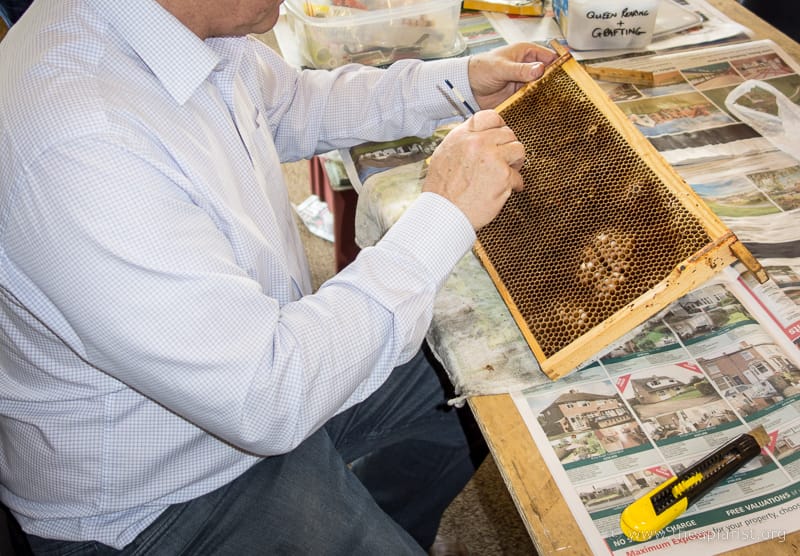
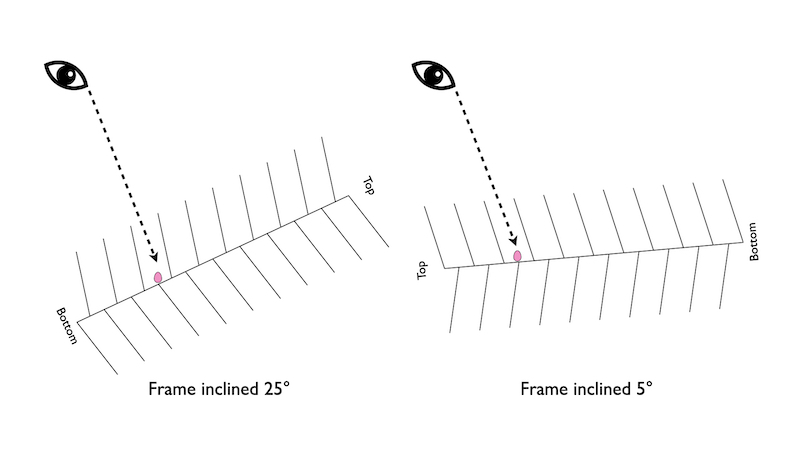
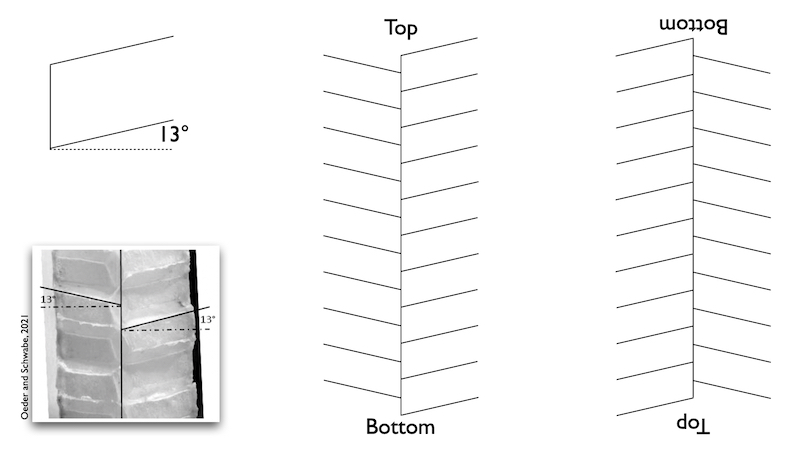
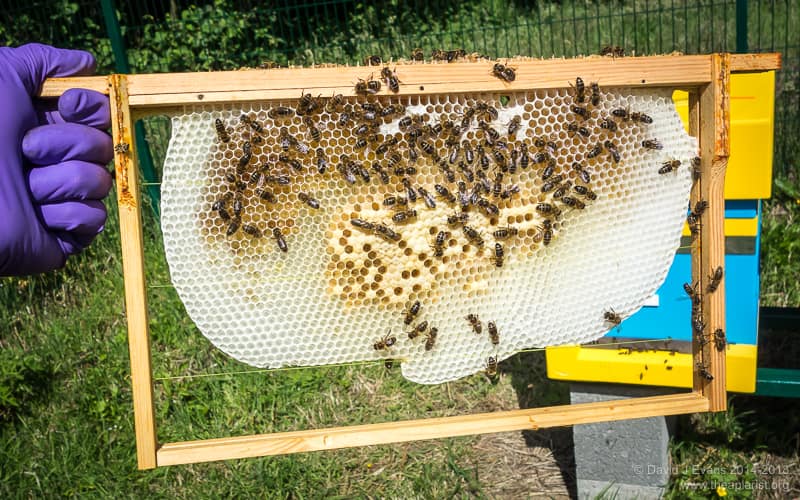


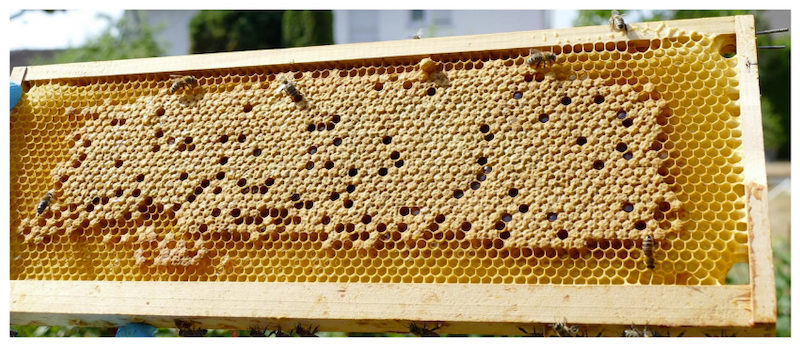
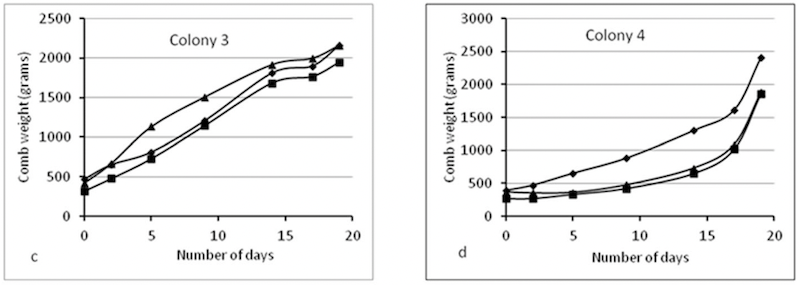
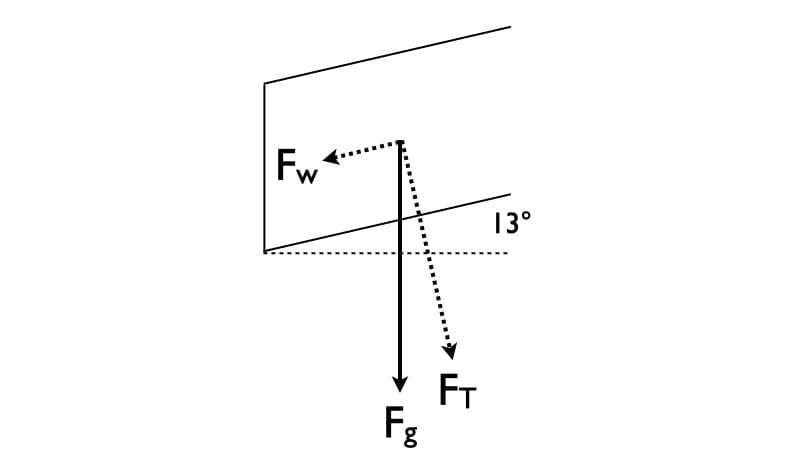
Join the discussion ...